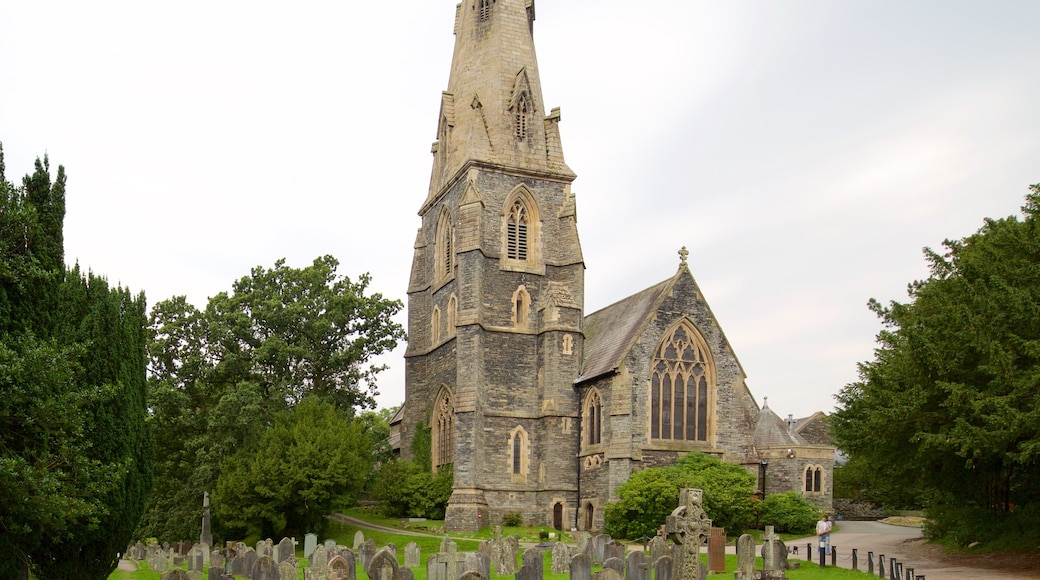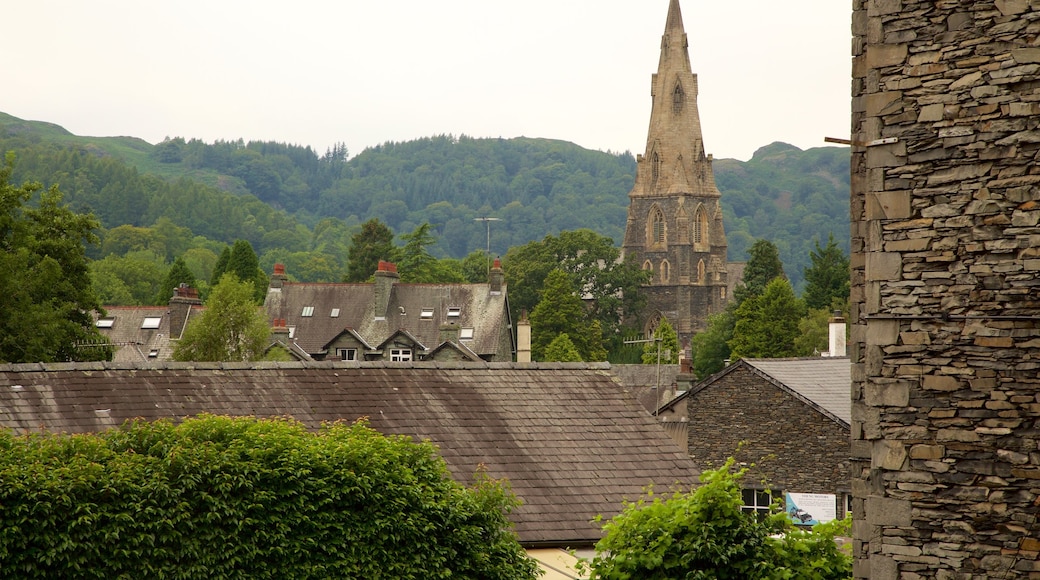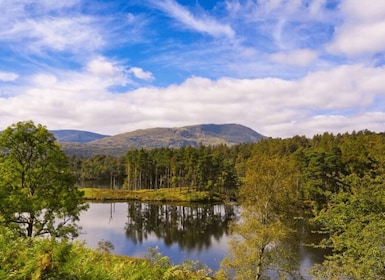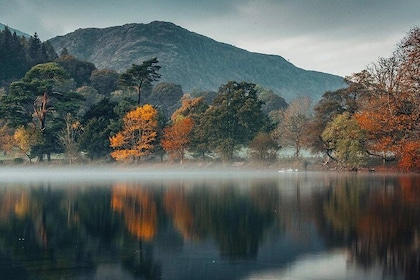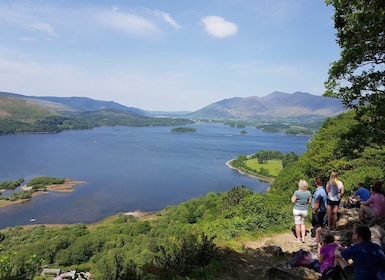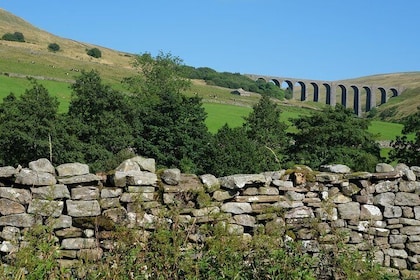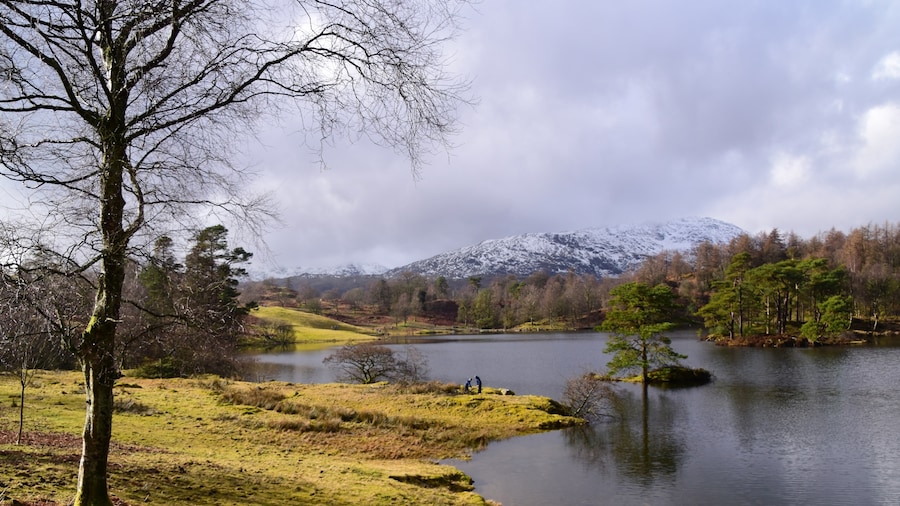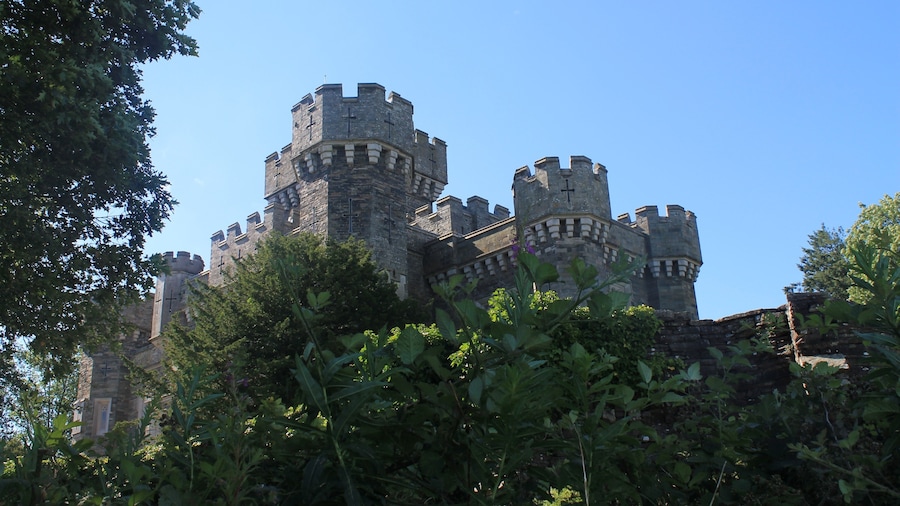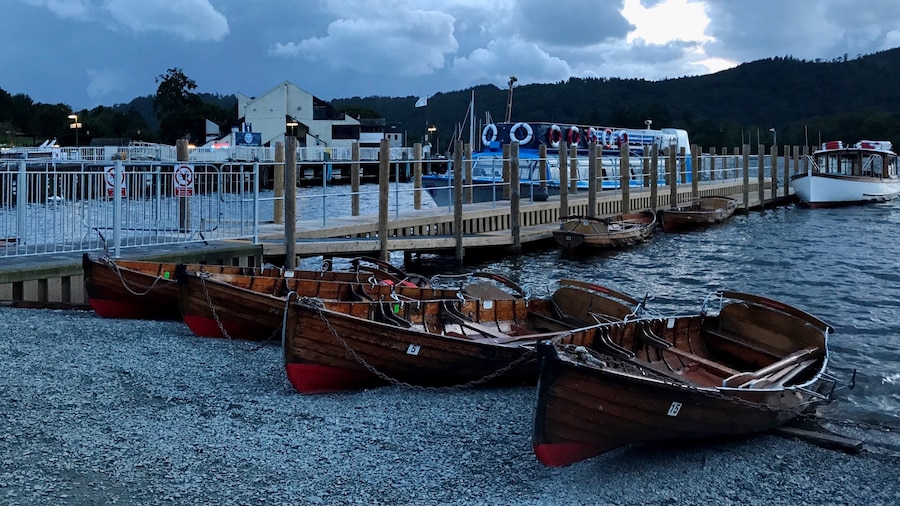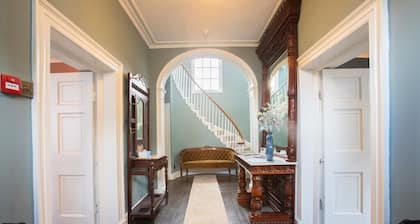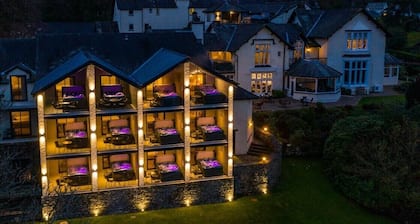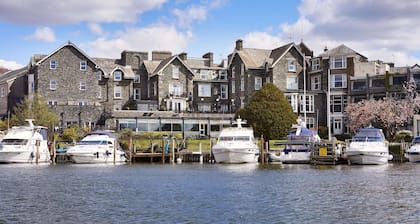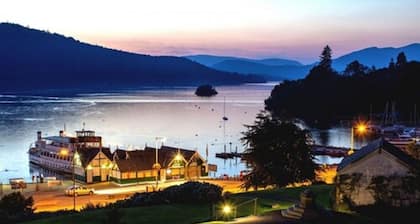Enjoy the serene ambiance in this charming lakeside church, peruse the intricate stained-glass windows and learn about medieval traditions.
The Church of St. Mary is a 19th-century religious site built in the early Gothic style. Its tall spire and sandstone walls are rather exceptional for churches in the Lake District. Spend a quiet afternoon learning about the site’s history and admiring the works of art that decorate the interior.
Enjoy the elegance of this structure, which is less opulent than many other Victorian sites. Capture photos of the church and its tall spire with a scenic backdrop of forests and quaint village buildings. Admire the orange glow of the church spire when it is illuminated at night. Stroll along the path winding through the cemetery leading to the church.
Enter through its main portal to arrive in the nave and inspect the works of art within. Among its highlights are the stained-glass windows by 19th-century artist Henry Holiday. Pick up a brochure for a greater understanding of the windows and other features in the church.
Marvel at the large mural portraying the Rushbearing ceremony. It features 62 characters taking part in an intriguing medieval ritual, when locals collected tall grasses to leave in the church as a way of cleaning and renewing its earth floor.
Note the depictions of 14 northern saints carved into the choir stalls. Make your way to the Wordsworth Chapel to see the sandstone font that dates back many centuries. See the stone plaque dedicated to one of England’s greatest writers, William Wordsworth. He was known to draw inspiration from the Lake District.
Architect Sir George Gilbert Scott designed the church, which was built over a period of four years from 1850. Visit the church on any day during daylight hours. It is free to enter.
The Church of St. Mary is northwest of the center of Ambleside. Walk for 10 minutes past restaurants and the White Platts Recreation Ground to find the church. It is just east of the charming River Rothay and north of the vast Windermere Lake.

